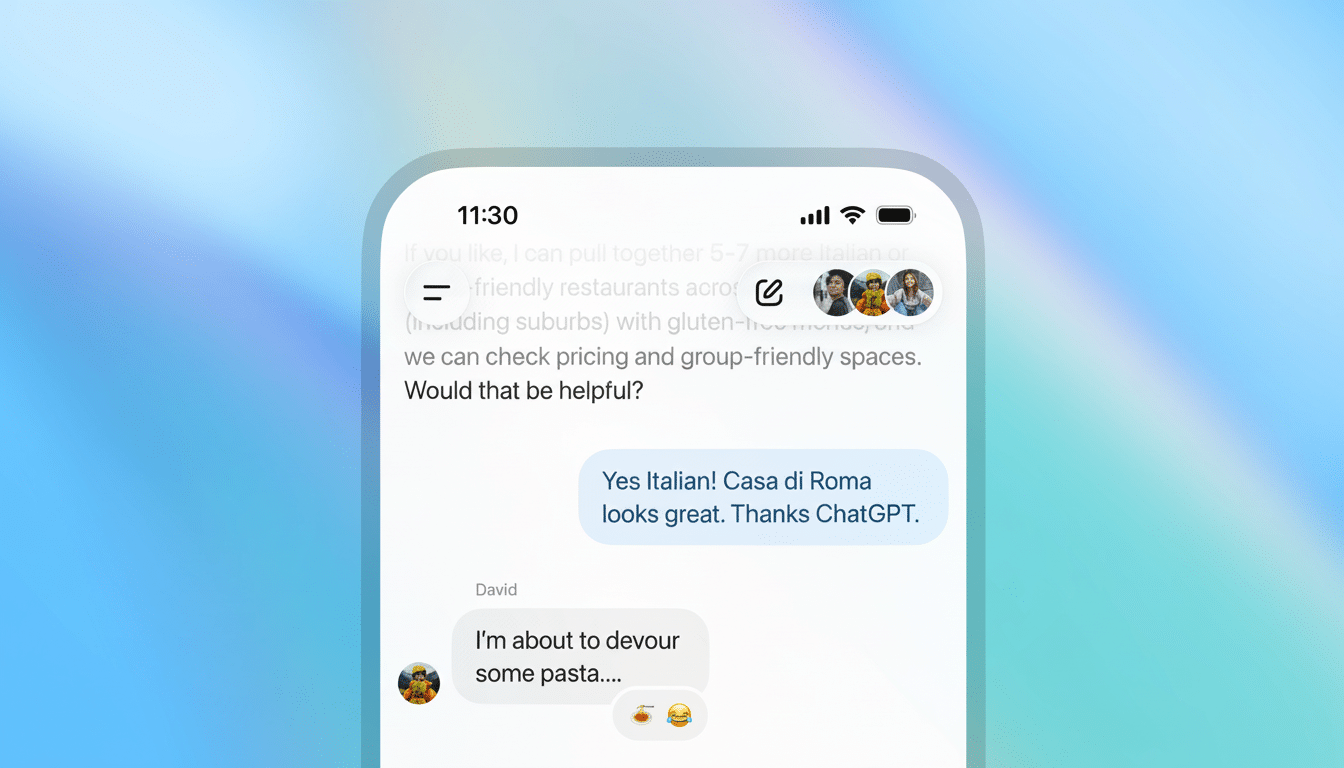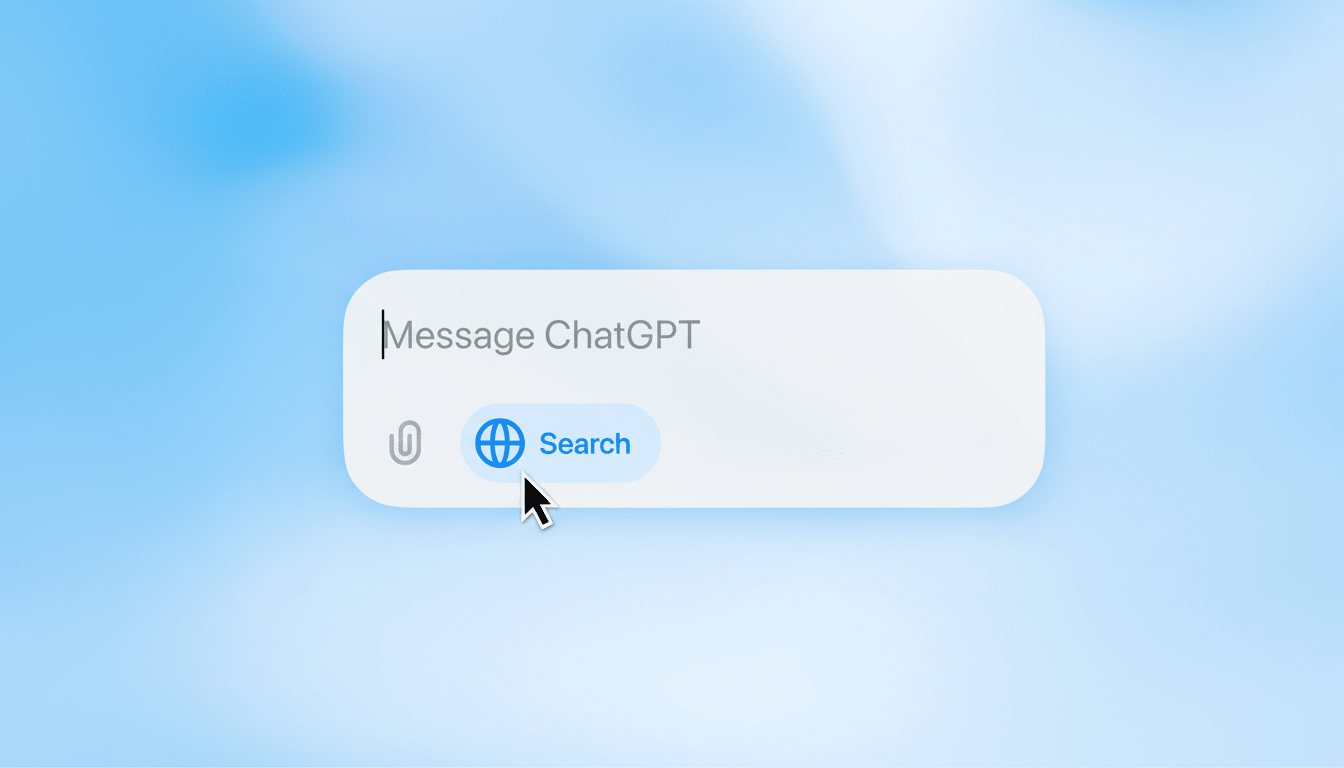OpenAI is testing the waters with group conversations in ChatGPT, offering a native space for friends, families and teams to join each other to work through ideas and invoke an AI when one is needed. The hitch for most people is this: You can probably not try it yet. Early access is limited to a handful of countries for now as OpenAI tries to understand how people will use the tool and refine the experience.
What OpenAI is testing with new ChatGPT group chats
The new feature essentially transforms ChatGPT into a multi-participant chat room which allows the AI to join in. As many as 20 people can join in a group, and OpenAI says ChatGPT will react contextually rather than hog the thread — answering questions when asked, clamming up while humans find their way through something awkward, auto-cycling between models (using what they’re calling their brand-new GPT-5.1 Auto tech).
- What OpenAI is testing with new ChatGPT group chats
- How group conversations in ChatGPT work day to day
- Privacy and safety boundaries for group conversations
- Limited access and early availability in select countries
- Why group AI features could matter for daily workflows
- What to watch next as OpenAI expands the pilot phase

In contrast to one-to-one chats, group conversations need a lighter, more ephemeral profile: name, username and profile image. That profile provides AI and others in the room with some kind of stable identity to point to, a key feature for things like image generation that can include people’s photos when explicitly requested within a given group.
How group conversations in ChatGPT work day to day
The structure of OpenAI is similar to actual patterns of collaboration. Messages between individuals are free, but when someone addresses ChatGPT directly, the system subtracts credits from that person’s balance. This pushes the AI’s load to the person who asks for compute-heavy help — summarizing a debate, drafting a plan or creating an image — while not punishing everyone else.
The model selection options available within any group are matched to each individual’s plan. If a member is on the free tier and another subscribes to Go, Plus or Pro, for instance, the AI will “roll” to whichever model is best accessible by that member when they respond to his or her prompts. It’s a granular approach that could decrease some of the friction in mixed teams while still retaining subscription value.
Quality-of-life enhancements include emoji reactions, basic moderation and the option for ChatGPT to reference profile images during light-hearted moments that the group asks for when they want some added fun. These are minor things, but they matter for adoption — group chats live and die by the little touches that keep people engaged.
Privacy and safety boundaries for group conversations
OpenAI stresses that your private chat history will not be used to shape responses inside group conversations, and that group interactions won’t determine the memory employed on the individual chats. The company says it’s also exploring finer-grained memory controls related to groups, which is a sound move because multi-user spaces bring new consent and context challenges.
For teenagers, OpenAI is implementing more stringent guidelines. Those under 18 can be part of groups, though sensitive material will be filtered by default, and those who use parental controls can turn off group chats altogether. The guardrails mirror wider industry efforts to bring age-appropriate AI experiences to users, following advice from bodies such as the Family Online Safety Institute and child safety frameworks used by platforms across the sector.

Limited access and early availability in select countries
The pilot is only accessible to logged-in users in Japan, New Zealand, South Korea and Taiwan. OpenAI will grow once it gathers early feedback, the organization says. If you’re outside those areas, you won’t see a switch or settings just yet — another sign that this is an experiment first and product rollout second.
The phased approach is typical of OpenAI, which has rolled out features softly again and again, assessed behavior, then scaled. It also provides the company time to stress-test cost controls and usage policies, especially important in multi-user settings where a single AI query can be set off by several people simultaneously.
Why group AI features could matter for daily workflows
Group work is where a lot of AI’s promised productivity gains start to find expression. In a product planning channel, for instance, teammates can argue about their requirements while asking ChatGPT to pull in competitive benchmarks or synthesize decisions. Students in a classroom study group can ask for an explainer and then confirm or question it together — a dynamic that can catch errors by the AI as they occur.
There is a reason OpenAI has an incentive to push this hard. The company claims that over 92% of Fortune 500 companies use its tools, and collaboration is where budget holders can see tangible results. Rivals already play here: Microsoft Teams employs Copilot to summarize meetings and threads, Google offers Gemini integrations throughout the company’s Workspace and Discord mainstreamed AI bots that work in shared channels. ChatGPT group discussions put OpenAI square in that daily workflow, especially not just as sidecar research tasks.
What to watch next as OpenAI expands the pilot phase
Key questions remain. How effectively will GPT-5.1 Auto decide when to speak up or remain silent? Will credit consumption feel equitable in longer, high-traffic threads? Can they create pinning decisions, lock threads and limit the generation of images without causing a mess of complexity?
If OpenAI can respond to those with thoughtful defaults and transparent policies, group chat could be one of ChatGPT’s most genuinely useful additions. That means until then, the vast majority of users will have to be patient and watch the pilot unfold overseas.

